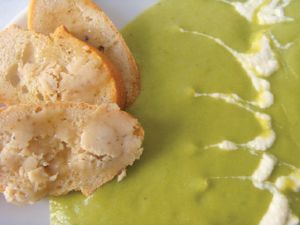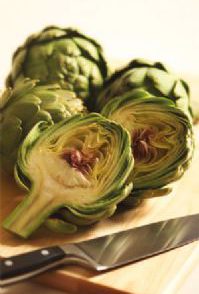My mother was pregnant with me the day her father took her to visit the kitchen of the cargo ship where he was working as the crew cook. My mother, being weak-stomached, immediately fell ill from the dense smell of paint, petrol, salt, moisture and fried onions in the belly of the ship. She said nothing, but her pale cheeks spoke for her.
She resisted, more because of her innate curiosity than her willingness to please her father. So they entered the small room that my grandfather kept clean, tidy and rich with the wonderful pans of food he created with the little money budgeted for the crew.
It was Sunday, and my grandfather had gotten a little more money to shop on Saturday and make a better meal for the ship’s ‘feast day.’
Besides a nice pasta with squid and a cake with custard and liquor to make the sailors happy, he had prepared a glorious soup with mixed seafood: a ‘bed’ of inexpensive mussels, upon which lay a profusion of different shells that appealed to the eyes and provoked a healthy appetite. Looking upon the colourful, fragrant array of seafood, my mother forgot her sickness, captured by the artistic presentation.
However, all her father could see in her eyes was voglia, an uncontrollable desire to eat that magnificent soup. According to Italian legend, the unfulfilled cravings of a mother-to-be translate into stains on the skin of the newborn resembling the food desired. My nonno was terrified: the baby in his daughter’s belly could be born with a thick, hard, dark, mussel-shaped spot on the skin, which would have been bruttissimo.
He explained with patience that he could not allow her to taste the soup, but told her how to cook it. My mother didn’t have the heart to admit she was not hungry at all, as she did not understand the worries of her father: she thought he was just proud of his own recipe. So she persevered within the belly of the ship while her own belly stirred with seasickness as I began to kick her from within.
The recipe here is as I heard it through my mother’s belly in the belly of the ship.
Mollusk Soup (serves 6)
1 kg mussels
500gr cherry stone clams (about 2in wide)
300 praire (warty venus) clams, aka sea truffles
300gr cannolicchi (long, tube-like shellfish)
400gr big red clams (cappe chione or fasolari)
1 kg peeled tomatoes
500gr sliced Tuscan bread (unsalted)
Olive oil, garlic, parsley, hot chili flakes
Put the different kinds of clams only (no mussels) in a big bowl of salted water to clear. Clean, brush and rinse the mussels, making sure to take the ‘beards’ off the shells. Put the mussels in a covered pan with olive oil, garlic and parsley over medium-low heat until the mussels are open, about 5 minutes. Filter the water through a cotton cloth and set aside. On a cutting board, using a rolling pin, beat the clams one by one to be sure they do not contain mud, then rinse them very well. Rinse all the shells thoroughly.
Steam the remaining shells in the same way as the mussels, then filter and reserve their water. Prepare a tomato sauce: brown some chopped garlic cloves and hot chili in olive oil; add the tomatoes crushed by hand and salt to taste. This sauce will be done in a few minutes.
Take the pan from the flame and add both the filtered clam and mussel water. Chop some parsley and set it aside. Slice the bread, grill it and rub a garlic clove on each slice. Put the bread in the single dishes, 2-3 slices per guest.
Arrange the mussels first, then the clams over the bread, then pour a cup of tomato sauce upon each dish of shells. Sprinkle with fresh chopped parsley and serve.







